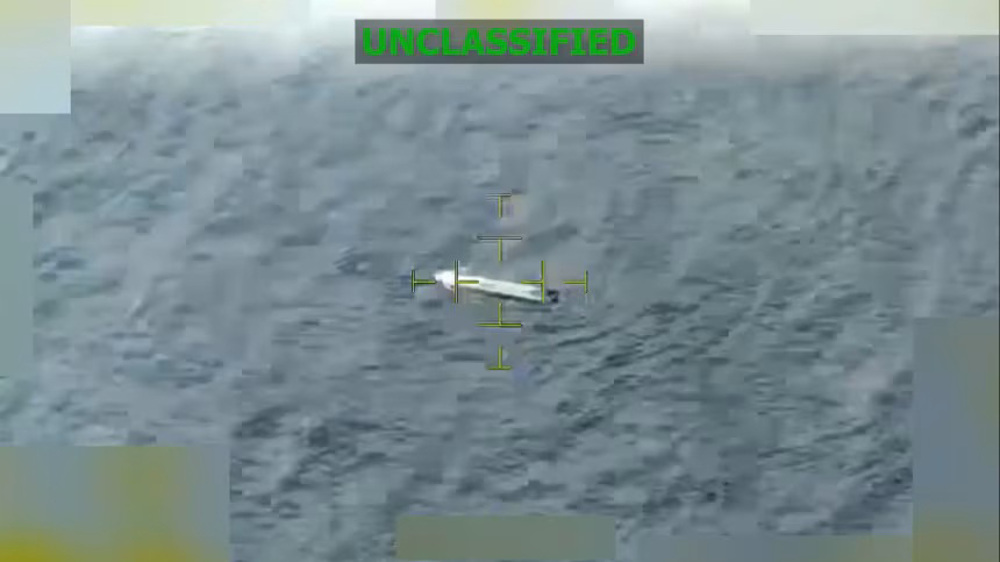US Air Force plans massive expansion to confront Russia, China
The US Air Force plans to return to Cold War firepower levels by adding more bombers, fighters, tankers and other frontline units -- part of President Donald Trump's vision of a stronger military to confront Russia and China.
Air Force leaders called Monday for a nearly 25 percent increase in operational squadrons over the next 12 years, which would bring the service to a size not seen since the Cold War, when it sustained 401 squadrons.
The service now has 312 squadrons, which number anywhere from eight to 24 aircraft depending on the type of the plane.
"The Air Force is too small for what the nation is asking us to do,” Air Force Secretary Heather Wilson said during a speech at the Air Force Association's annual Air, Space & Cyber Conference in Maryland.
“The Air Force we need has 386 operational squadrons by 2030," she added. The service calculates that it would need 40,000 more personnel to support the additional squadrons.

The call for more than 70 additional squadrons is based on estimates of what it would take to fight and win a potential conflict with China or Russia in the future, Wilson said, adding, "It's not just larger; the way we fight will be different."
The Air Force secretary noted that the new assessment is in line with the administration’s National Defense Strategy outlined by the Pentagon chief, James Mattis, earlier this year.
That strategy shifts the focus of military planning from the so-called war on terror to deterring and/or defeating what it calls "revisionist" states -- Russia and China in particular, but also Iran and North Korea.
"Inter-state strategic competition, not terrorism, is now the primary concern in US national security," the document says, adding, "Long-term strategic competitions with China and Russia are the principal priorities for the [Defense] Department."
"Today, we are the best Air Force in the world," Air Force Chief of Staff Gen. David L. Goldfein said. "Our adversaries know it. They have been studying our way of war and investing in ways to take away those advantages. This is about how we stay in front."
Last year, the US Air Force conducted 172,000 separate sorties as part of the campaign against Daesh (ISIL) -- an average of nearly 500 per day. About 98,000 of those flights were precision-strike missions employing air-to-ground munitions.
But with the Trump administration’s defense strategy adding to the list of tasks the Air Force must accomplish, the service needs to grow and adapt, officials said.
The largest growth would be to the Air Force’s bomber squadrons, which would increase from nine to 14. Most of the current bombers, which include nuclear capable B-52 and B-2, are set to retire after Northrop Grumman's new B-21 Raider bomber joins the force in 2025.
Cold War strike fighters will be replaced by F-35 jets. Aerial tankers as well as intelligence, surveillance and reconnaissance platforms will also see a big increase in numbers.
The proposed increases have not yet been worked in the Defense Department’s budget blueprints. But Air Force leaders believe the changes are essential to ensuring that the United States can meet the requirements outlined in the new defense strategy.
"We usually have the dialogue about the Air Force we can afford," Goldfein said. "This is different. This is about the Air Force we need to present credible options to compete, deter and, if deterrence fails, win."
The Air Force believes that an increased bomber presence is vital in the Pacific, where China's first aircraft carrier has been conducting flight operations after being declared combat ready this year.
"China has militarized islands in the South China Sea, and now all of Southeast Asia is within reach of its long-rang bombers," Wilson said. "Part of President Xi's plan is for China to be a top-ranked military by 2050, and President Xi is no longer bound by term limits on his presidency."
The US Navy has announced similar plans to grow its fleet size by nearly a third and shift tactics to counter rising threats from Russia and China.
‘Trump authorized Epstein’s death’; ‘love for young girls’: Accusations infest new Epstein files
Libya’s army chief killed in Ankara plane crash after high-level talks with Turkish officials
Israeli settlers tear gas 3 Palestinian children in attack on West Bank home
‘He raped me’: New trove of Epstein files reveals why Trump tried to bury them
Iran halts gas exports to Iraq amid surge in domestic demand
Belgium files to intervene in South Africa’s ICJ genocide case against Israel
Netanyahu appears in court for 65th time in ongoing corruption trial
Iran's government submits $111bn budget bill for year 1405











 This makes it easy to access the Press TV website
This makes it easy to access the Press TV website